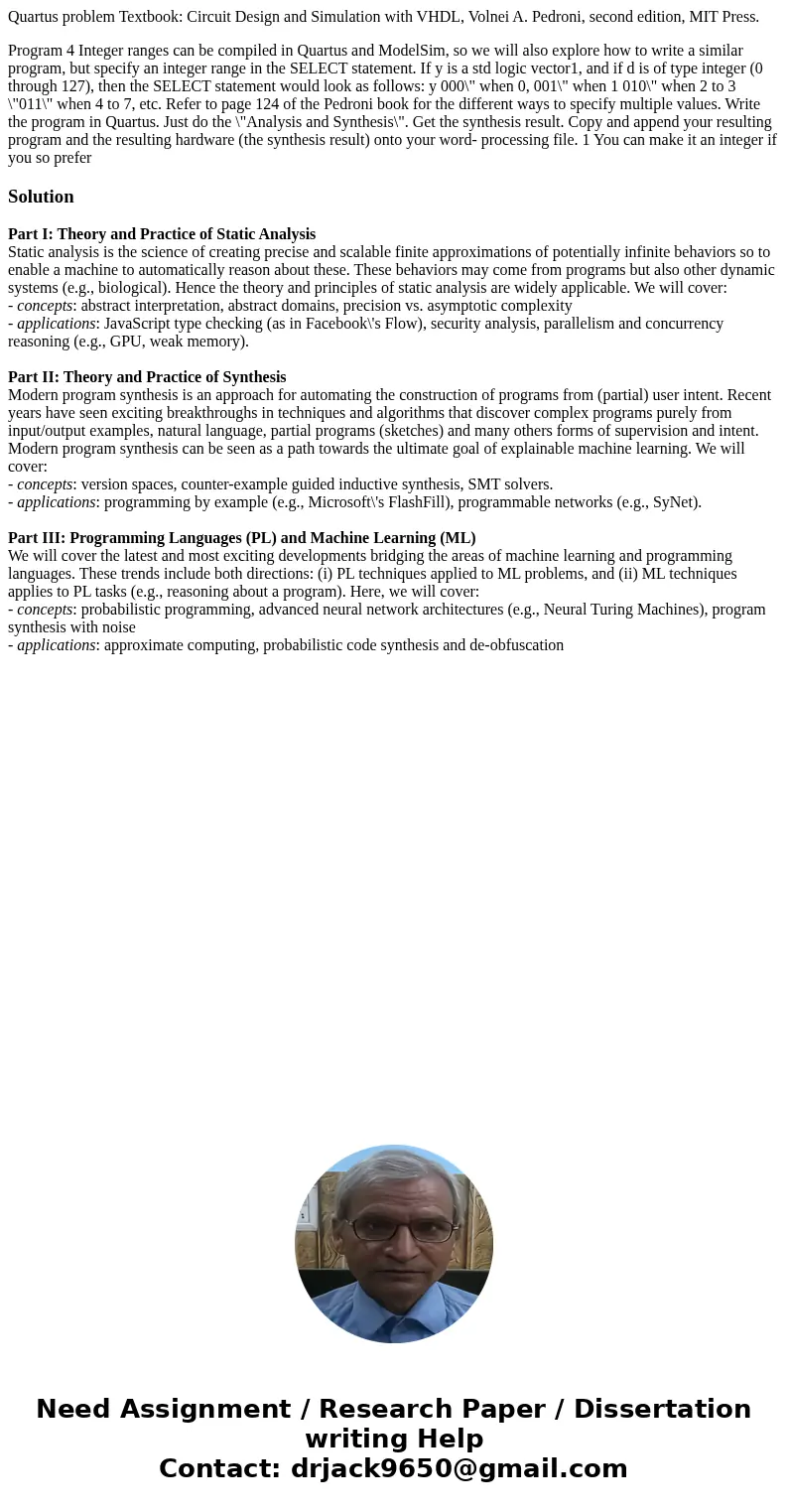Quartus problem Textbook Circuit Design and Simulation with
Quartus problem Textbook: Circuit Design and Simulation with VHDL, Volnei A. Pedroni, second edition, MIT Press.
Program 4 Integer ranges can be compiled in Quartus and ModelSim, so we will also explore how to write a similar program, but specify an integer range in the SELECT statement. If y is a std logic vector1, and if d is of type integer (0 through 127), then the SELECT statement would look as follows: y 000\" when 0, 001\" when 1 010\" when 2 to 3 \"011\" when 4 to 7, etc. Refer to page 124 of the Pedroni book for the different ways to specify multiple values. Write the program in Quartus. Just do the \"Analysis and Synthesis\". Get the synthesis result. Copy and append your resulting program and the resulting hardware (the synthesis result) onto your word- processing file. 1 You can make it an integer if you so preferSolution
Part I: Theory and Practice of Static Analysis
Static analysis is the science of creating precise and scalable finite approximations of potentially infinite behaviors so to enable a machine to automatically reason about these. These behaviors may come from programs but also other dynamic systems (e.g., biological). Hence the theory and principles of static analysis are widely applicable. We will cover:
- concepts: abstract interpretation, abstract domains, precision vs. asymptotic complexity
- applications: JavaScript type checking (as in Facebook\'s Flow), security analysis, parallelism and concurrency reasoning (e.g., GPU, weak memory).
Part II: Theory and Practice of Synthesis
Modern program synthesis is an approach for automating the construction of programs from (partial) user intent. Recent years have seen exciting breakthroughs in techniques and algorithms that discover complex programs purely from input/output examples, natural language, partial programs (sketches) and many others forms of supervision and intent. Modern program synthesis can be seen as a path towards the ultimate goal of explainable machine learning. We will cover:
- concepts: version spaces, counter-example guided inductive synthesis, SMT solvers.
- applications: programming by example (e.g., Microsoft\'s FlashFill), programmable networks (e.g., SyNet).
Part III: Programming Languages (PL) and Machine Learning (ML)
We will cover the latest and most exciting developments bridging the areas of machine learning and programming languages. These trends include both directions: (i) PL techniques applied to ML problems, and (ii) ML techniques applies to PL tasks (e.g., reasoning about a program). Here, we will cover:
- concepts: probabilistic programming, advanced neural network architectures (e.g., Neural Turing Machines), program synthesis with noise
- applications: approximate computing, probabilistic code synthesis and de-obfuscation

 Homework Sourse
Homework Sourse